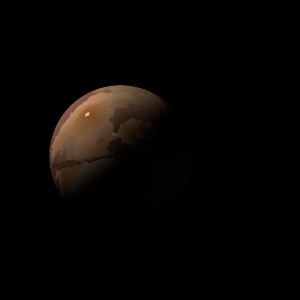|
|
Space Astro
|
Info for exoplanet "Uqliano"
| Scientific (actual) data |
|---|
| Name | HD 108236 d |
| Planet status | Confirmed |
| Radius | 0.2427 |
| Orbital period | 14.1756 |
| Semi major axis | 0.1131 |
| Orbit eccentricity | 0.17 |
| Inclination | 89.22 |
| Discovered | 2020 |
| Updated | 2022-03-14 |
| Omega | 190 |
| Tzero tr | 2458570 |
| Temperature (kelvin) | 708 |
| Publication | Published in a refereed paper |
| Detection type | Primary Transit |
| Radius measurement type | Primary Transit |
| Star name | HD108236 |
| Right ascension | 186.57° |
| Declination | -51.36° |
| Mag v | 9.2 |
| Star distance | 64.6 |
| Star metallicity | -0.3 |
| Star mass | 0.853 |
| Star radius | 0.894 |
| Star age | 5.8 |
| Star temperature | 5720 |
| Wikipedia article | HD 108236 d |
Back
| |
| Fictional info (?) |
|---|
| Suggested name | Uqliano |
| Planet type | Terrestrial |
| The water has probably photodissociated, and the free oxygen has been swept into interplanetary space by the solar wind because of the lack of a planetary magnetic field.
The surface of this inhospitable planet is inhabitated by aggressive stone-age bacteria that survive on the surface while seeking a substance called "Jotsut". Most Gelska are somewhat related to Narfran Gaeon and have 3 arms and vary in size from 2 to 4 mm. Most Gelska are known to thrive at temperatures from -50 to -10°C and even near-vacuum which is common on Uqliano. |
| Estimated population | 4000000 |
| Atmosphere | Oxygen | 92% |
| Carbon dioxide | 7.9% |
| Water | 0.0032% |
| Methane | 0.0023% |
| Atmospheric pressure | 40 bar |
 |
| No known satellites |
| Google search for Uqliano |
|
Website by Joachim Michaelis
|
|
|
|